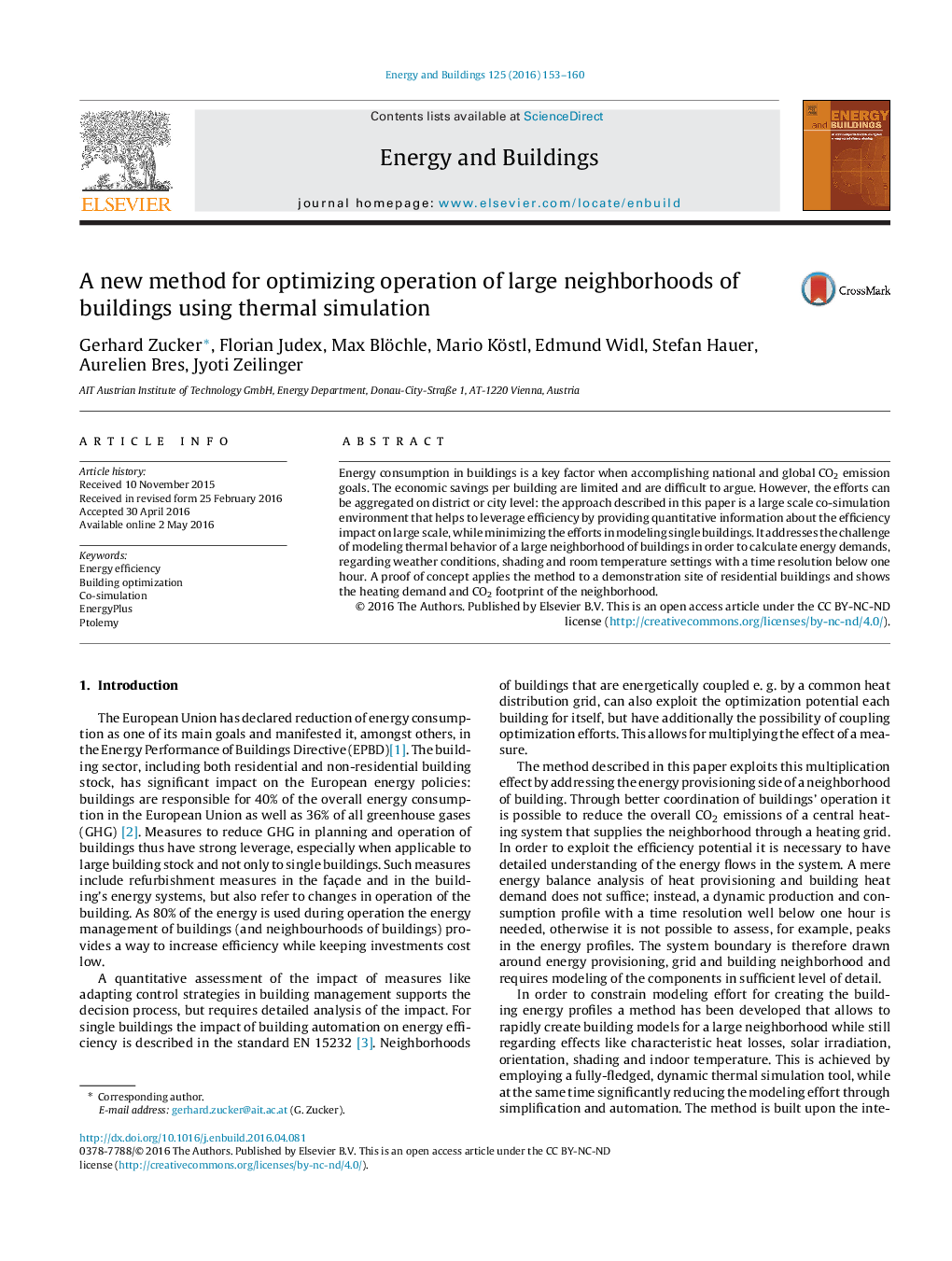| Article ID | Journal | Published Year | Pages | File Type |
|---|---|---|---|---|
| 6729930 | Energy and Buildings | 2016 | 8 Pages |
Abstract
Energy consumption in buildings is a key factor when accomplishing national and global CO2 emission goals. The economic savings per building are limited and are difficult to argue. However, the efforts can be aggregated on district or city level: the approach described in this paper is a large scale co-simulation environment that helps to leverage efficiency by providing quantitative information about the efficiency impact on large scale, while minimizing the efforts in modeling single buildings. It addresses the challenge of modeling thermal behavior of a large neighborhood of buildings in order to calculate energy demands, regarding weather conditions, shading and room temperature settings with a time resolution below one hour. A proof of concept applies the method to a demonstration site of residential buildings and shows the heating demand and CO2 footprint of the neighborhood.
Related Topics
Physical Sciences and Engineering
Energy
Renewable Energy, Sustainability and the Environment
Authors
Gerhard Zucker, Florian Judex, Max Blöchle, Mario Köstl, Edmund Widl, Stefan Hauer, Aurelien Bres, Jyoti Zeilinger,
